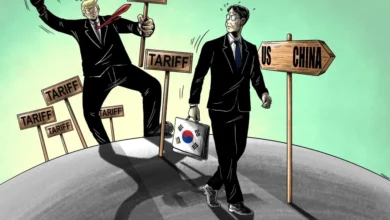Stern Warning: Why Indians Must Stay Away From Ola Electric IPO

Ola, a name synonymous with ride-hailing services in India, has decided to step into the public market by launching an IPO despite recording heavy losses over the past few years. This move raises several red flags for potential investors. This article delves into the financial health of Ola Cabs and Ola Electric, exposing why their IPO is a risky gamble.
Financial Performance: A Tale of Losses
NI Technologies, the parent company operating under the Ola brand, reported a consolidated net loss of ₹772.25 crore for the fiscal year 2023. This staggering loss is part of a worrying trend, with the company consistently recording deficits over the last five years. Here’s a snapshot of Ola’s financial performance:
- FY 2023: Loss of ₹772.25 crore
- FY 2022: Loss of ₹1,108 crore
- FY 2021: Loss of ₹924 crore
- FY 2020: Loss of ₹659 crore
- FY 2019: Loss of ₹556 crore
Ola Electric Mobility Ltd, another venture under the Ola umbrella, reported an even more alarming consolidated net loss of ₹1,472.08 crore for FY 2023. The financial health of Ola Electric over the past few years has been nothing short of dismal:
- FY 2023: Loss of ₹1,472.08 crore
- FY 2022: Loss of ₹1,292 crore
- FY 2021: Loss of ₹1,174 crore
- FY 2020: Loss of ₹890 crore
- FY 2019: Loss of ₹625 crore
These figures clearly indicate a pattern of escalating losses, casting a shadow over the company’s sustainability and growth prospects.
The Case Against Investing in Ola Electric
Limited Operating History
Ola Electric has a relatively short operating history in the electric vehicle (EV) market. This limited experience amplifies the risks, as the company has yet to demonstrate consistent performance and profitability.
Defects and Quality Issues
The EV market, particularly for Ola Electric, has been plagued with numerous reports of defects and quality issues. These range from battery malfunctions to overall vehicle reliability problems. Such issues erode consumer trust and tarnish the brand’s reputation.
In-House Cell Manufacturing Capabilities
Ola Electric’s in-house cell manufacturing capabilities are still in their infancy. The lack of established and reliable production processes raises concerns about the company’s ability to meet quality and supply demands effectively.
Loss of Incentives
Government incentives have been a significant driver for EV adoption. However, any reduction or loss of these incentives could adversely affect Ola Electric’s market competitiveness and financial health.
Supply and Demand for EVs
The supply-demand dynamics in the EV market are volatile. Ola Electric’s ability to balance production with market demand is crucial, yet the company’s track record suggests ongoing struggles in this area.
New EV Models
The introduction of new EV models by competitors poses a significant threat. Established players with proven track records in quality and performance are more likely to capture market share, leaving Ola Electric to play catch-up.
Ola Futurefactory
Ola’s ambitious Ola Futurefactory project, touted as the world’s largest two-wheeler factory, is still in its early stages. The project’s success hinges on numerous variables, including operational efficiency, regulatory approvals, and market acceptance.
Increasing Debts
Ola’s increasing debts are a glaring red flag. The company foresees continued operational losses in the short term while focusing on business expansion and product portfolio growth. This debt accumulation raises concerns about the company’s financial stability and its ability to manage long-term liabilities.
Potential Losses
Ola Electric acknowledges the potential for short-term operating losses but remains committed to investing heavily in business expansion and diversification. With an estimated ₹1,600 crore slated for Research and Development (R&D) over the next three years, the risk of further financial strain looms large.
SEBI: The Custodian of Market Irregularities. Role Of SEBI In Such IPO
The Securities and Exchange Board of India (SEBI) and its chairman have come under intense scrutiny for their dubious role in permitting loss-making companies to launch Initial Public Offerings (IPOs). This regulatory body, tasked with protecting investors and ensuring market integrity, has repeatedly failed to perform due diligence, raising serious questions about its efficacy and intentions.
SEBI’s Failure to Investigate
SEBI’s mandate is to safeguard the interests of investors and ensure that the securities market operates in a transparent and fair manner. However, its repeated allowance of loss-making companies to launch IPOs indicates a stark deviation from this mission. Despite multiple warnings and reminders, SEBI has persistently ignored these red flags, allowing companies with poor financial health to enter the market. This blatant oversight has led to significant financial losses for retail investors who place their trust in the regulator’s competence and integrity.
The Case of Loss-Making Companies
In recent times, SEBI has greenlighted IPOs for companies with alarming financial records. These entities have not only failed to generate profits but have also accumulated substantial losses. For instance, Ola and Ola Electric, as discussed earlier, reported colossal losses yet were permitted to launch their IPOs. This raises the question: Is SEBI genuinely assessing the financial viability of these companies, or is there a more sinister motive at play?
Historical Precedents
This is not an isolated incident. Historically, SEBI has allowed other loss-making companies to float their shares, which subsequently plummeted, causing immense financial distress to retail investors. The pattern of allowing financially unstable companies to raise funds from the public cannot be dismissed as mere oversight. It reflects a deep-rooted issue within SEBI’s regulatory framework and its enforcement.
The Suspicious Role of SEBI and Its Chairman
The role of SEBI and its chairman in this context is highly suspicious. As a market regulator, SEBI should conduct thorough investigations and due diligence before approving any IPO. However, their failure to do so repeatedly suggests potential malpractice. There are allegations that SEBI and its chairman might be receiving hefty bribes or a significant cut from the IPO fundraisers, compromising their impartiality and regulatory duties.
The Need for a CBI Probe
Given the gravity of these allegations and the apparent dereliction of duty, there is an urgent need for a Central Bureau of Investigation (CBI) probe into SEBI’s operations. A thorough investigation is essential to uncover why SEBI is so adamant about allowing these loss-making companies to launch IPOs. The probe should focus on:
- Investigating Financial Irregularities: A detailed examination of SEBI’s financial transactions and communications with these companies.
- Evaluating Regulatory Processes: Assessing the due diligence processes that SEBI claims to follow.
- Identifying Corruption: Probing any potential corruption or bribery incidents involving SEBI officials and the companies in question.
SEBI’s Persistent Failure: Loss-Making Startups and the Retail Investor Catastrophe
The Securities and Exchange Board of India (SEBI) has a troubling history of allowing loss-making startups to launch Initial Public Offerings (IPOs), resulting in severe financial losses for retail investors. This pattern of regulatory negligence raises serious questions about SEBI’s commitment to its mandate of protecting investor interests and ensuring market integrity. Below are some notable incidents where loss-making startups launched IPOs, leading to significant financial losses for retail investors.
1. Zomato (2021)
Overview
- IPO Launch: July 2021
- Issue Price: ₹76 per share
- Post-IPO Performance: Initially surged but then faced volatility and significant declines.
Financial Impact
- Investor Losses: Many retail investors saw their investments diminish as the stock price failed to sustain its initial high.
- Reasons for Failure: High operational costs, ongoing losses, and questions about long-term profitability in a highly competitive market.
2. Paytm (2021)
Overview
- IPO Launch: November 2021
- Issue Price: ₹2,150 per share
- Post-IPO Performance: The stock plummeted immediately upon listing, losing over 27% on the first day and continuing to decline.
Financial Impact
- Investor Losses: Retail investors faced massive losses as the stock price dropped significantly from its issue price.
- Reasons for Failure: Overvaluation, lack of profitability, and skepticism about the company’s business model and future growth prospects.
3. CarTrade Tech (2021)
Overview
- IPO Launch: August 2021
- Issue Price: ₹1,618 per share
- Post-IPO Performance: The stock price dropped sharply post-listing, losing substantial value.
Financial Impact
- Investor Losses: Retail investors experienced significant losses as the stock price fell below the issue price.
- Reasons for Failure: Unprofitable operations, high competition, and doubts about the company’s ability to scale profitably.
4. Fino Payments Bank (2021)
Overview
- IPO Launch: November 2021
- Issue Price: ₹577 per share
- Post-IPO Performance: The stock struggled to maintain its issue price, facing continuous declines.
Financial Impact
- Investor Losses: Retail investors saw their investments erode as the stock price failed to perform well.
- Reasons for Failure: Lack of profitability, high operational costs, and a challenging business environment.
5. One97 Communications (2021)
Overview
- IPO Launch: November 2021 (Parent company of Paytm)
- Issue Price: ₹2,150 per share
- Post-IPO Performance: Mirroring Paytm’s performance, the stock dropped significantly post-listing.
Financial Impact
- Investor Losses: Retail investors faced severe losses as the stock price continued to decline.
- Reasons for Failure: Similar to Paytm, issues included overvaluation, lack of clear profitability, and market skepticism about the business model.
SEBI’s Regulatory Lapses and Their Consequences
Ignoring Red Flags
Despite multiple warnings and reminders, SEBI has continually failed to address concerns regarding the financial health of companies launching IPOs. The regulator’s negligence has allowed numerous loss-making startups to enter the public market, causing severe financial distress to retail investors.
Historical Negligence
SEBI’s track record includes several instances where loss-making companies were permitted to launch IPOs, only to fail and cause significant financial harm. This persistent pattern suggests either gross incompetence or potential malpractice within the regulatory body.
Suspicions of Corruption
The consistent approval of IPOs for financially unstable startups raises suspicions of corruption. Allegations suggest that SEBI and its chairman might be receiving substantial bribes or a cut from the IPO fundraisers, compromising their impartiality and regulatory responsibilities.
The Need for a CBI Probe
Given SEBI’s repeated failures, a Central Bureau of Investigation (CBI) probe is essential to uncover the truth behind these decisions. The investigation should focus on:
- Examining Financial Irregularities: Investigating potential corruption or financial misconduct within SEBI.
- Evaluating Regulatory Processes: Assessing the adequacy and implementation of SEBI’s due diligence processes.
- Identifying Systemic Failures: Uncovering the systemic issues that allow financially unstable startups to access public funds.




